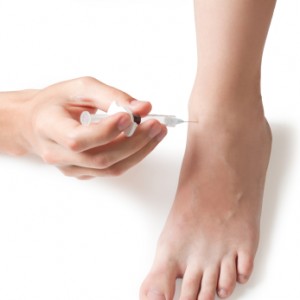 Sweaty feet (hyperhidrosis) can occur locally in areas such as the axilla region, palms and soles of the feet, or it can occur globally. There are two forms. A person can have a primary genetic, sympathetic cause or a secondary cause due to pathologies such as obesity, a tumor, hyperthyroidism and gout. With excessive sweating, patients are prone to develop problems such as verruca, fungal infections of the skin, onychomycosis and other skin conditions. Most commonly, people with hyperhidrosis are embarrassed and don’t seek treatment for the condition due to the humiliation they feel.
Sweaty feet (hyperhidrosis) can occur locally in areas such as the axilla region, palms and soles of the feet, or it can occur globally. There are two forms. A person can have a primary genetic, sympathetic cause or a secondary cause due to pathologies such as obesity, a tumor, hyperthyroidism and gout. With excessive sweating, patients are prone to develop problems such as verruca, fungal infections of the skin, onychomycosis and other skin conditions. Most commonly, people with hyperhidrosis are embarrassed and don’t seek treatment for the condition due to the humiliation they feel.
Traditional treatments focus on iontophoresis, shoe sprays, powder, skin roll-ons such as antiperspirant and frequent change of moisture-wicking socks. Two treatments that are approved by the Food and Drug Administration (FDA) are the use of botulinum toxin (Botox®,Allergan) for hyperhidrosis and miraDry® (Miramar Labs).
Treatment

Botox is an injection of a neuroinhibitor. Neuromuscular inhibition limits the production and distribution of sweat from the eccrine glands. One injects Botox into the soles of the foot. After injection, over half of the patients will have mild erythema and half of the patients can do an activity immediately following treatment. It takes an average of three to five days for the Botox injections to become effective and the effects last approximately six months.
